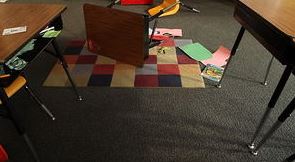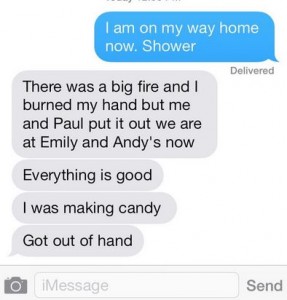“I’m finished! I’ve been asking you to clean your room for weeks. Hand me your phone.”
“But I won’t be able to text or call anyone all weekend!! I took out the dirty laundry, I’ll do the rest next week!”
(It should be noted here that the room in question belongs to a 13 year old boy and the ‘straightening’ being requested is not military corners and white glove dust inspection. And this is the third ‘next week’ the task has been delayed.)
“The phone will be returned when the room is clean. The rest is up to you.”
“I want you to know I am going to have a very hard time forgiving you.”
“I’m willing to deal with that.”
It’s been another typical Friday night at my house. In fact, since he started showing the first signs of puberty, arguments in the house have occurred almost daily. Many include more ‘descriptive’ language. These are the years my mother warned me about.
Talk about the teen years long enough and you’re bound to use the word aggression, generally as a complaint about the way teens display their anger. As a therapist, I’m often asked by parents to teach their teens to stop being aggressive. However, Philip Lichtenberg, gestalt therapist, argues that there cannot be human relationships without aggression. To aggress, he argues, is simply to assert one’s will or move forward towards a goal or need. Aggression can be inclusive or exclusive, that is, aggression can be energy directed at deepening relationships or at limiting them.
Exclusive aggression is characterized by one person diminishing or negating the other. The exclusive aggressor asserts him/herself as right and the other as wrong. In order for the relationship to continue, one person must accept being ‘less than’ the other. Inclusive aggression involves actively promoting both parties in the relationship. The inclusive aggressor clearly defines their position at the same time urging the other to do the same. When both parties feel they have been heard and have listened to one another, the relationsh ip deepens.
ip deepens.
The negative connotation of the term aggression means that we seldom consider it as a tool in parenting. But when we think of aggression as the means for children to develop their unique identities and sense of self, it can be something we model for them and support as a part of their development.
Perhaps we can consider parenting styles to be inclusive or exclusive. Exclusive authoritarian parenting exists when the desires and needs of the parents supersede those of the child. Relationships between parent and child in these situations are strained and the child learns that the only way to assert them self is to exert power over another.
Inclusive parenting supports the independence of both the child and the parent and brings the two closer. Inclusive parents set clear boundaries while at the same time recognizing the importance of the child’s will. They model independence and respect.
The boy in question at the beginning of this article did not get his phone back Friday night. In protest, he watched movies on his loft bed surveying his mess. The mother poured herself a glass of wine and read her book. Eventually his need to text will call him down to finish the job. And when I return his phone, I will thank him. I suspect he may even forgive me.








